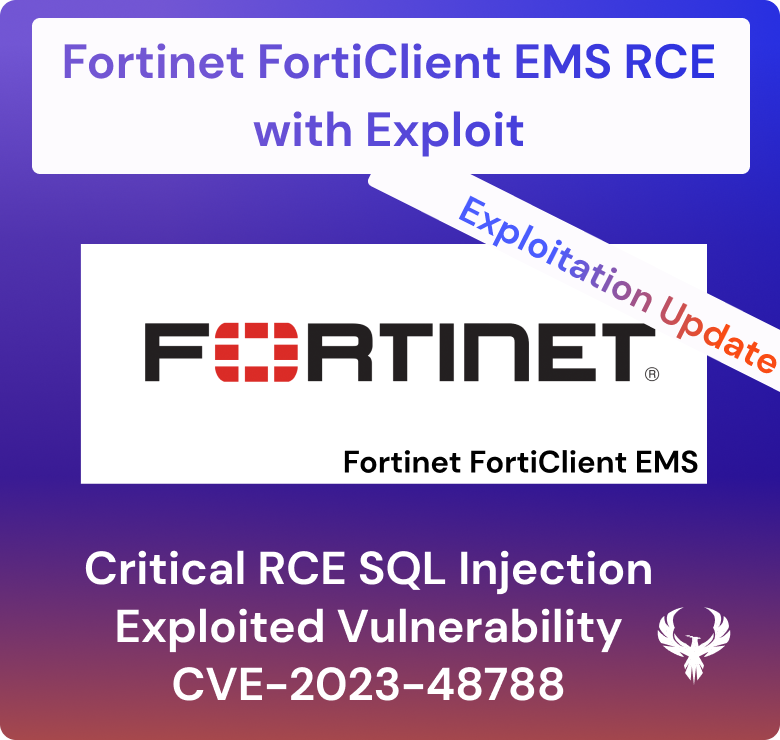Previous Issues of vulnerability Weekly
- Security Vulnerability of the Week 25/07/22– Atlassian Hardcoded Credentials, Sonicwall GSM, Cisco Nexus, Microsoft Macro, Vmware Fix, Mac OS spotlight vulnerability and more
- Security Vulnerability of the Week 10/07/22 – OPENSSL Hearbleed2, Apache Common, CuteBoi NPM exploit, Iconburst NPM exploit, Orbit attack, Follina Weaponization, Chrome’s latest vulnerabilities
- Security Vulnerability of the Week 04/07/22 – Jenkins massive plugins issue , zoho, Exchange backdoors, Edge high vuln
- Security Vulnerability of the Week 20/06/22 – PiPy leaking AWS credentials, illumina healthcare vulnerability, Sharepoint RCE, QNAP PHP Vuln
- Security Vulnerability of the Week 20/06/22 – Couchbase, Splunk, CISCO, Azure Synapse, Oracle Cloud
- Security Vulnerability of the Week 13/06/22 – Atlassian Confluence, Follina & Weaponization,
This week we deep dive into Golang RCE, Cisco Router VPN bypass, VMWARE authentication bypass, TCL critical config bypass, DrayTek networking appliances vulnerability and breaches/hacks from NHS111 Slack and Twitter.
Appsec
Golang Vulnerability ParseThru
Researchers at Oxeye an Israel research organization, have discovered a new golang vulnerability.
“The newly discovered vulnerability allows a threat actor to bypass validations under certain conditions, as a result of unsafe URL parsing methods built in the language.”
Report from the firm: https://www.oxeye.io/blog/golang-parameter-smuggling-attack
The issue, at its core, has to do with inconsistencies stemming from changes introduced to Golang’s URL parsing logic implemented in the “net/url” library.
While versions of the programming language before 1.17 treated semicolons as a valid query delimiter (e.g., example.com?a=1;b=2&c=3), this behaviour has since been modified to throw an error upon finding a query string containing a semicolon.
Credit Oxeye
“The net/url and net/http packages used to accept “;” (semicolon) as a setting separator in URL queries, in addition to “&” (ampersand),” according to the release notes for version 1.17 released last August.
“Now, settings with non-percent-encoded semicolons are rejected, and net/http servers will log a warning to ‘Server.ErrorLog’ when encountering one in a request URL.”
The issue is triggered when a Golang-based public API built upon version 1.17 or later communicates with a backend service running an earlier version,
Similar to the log4j issue, if a string is crafted, it could be ignored by the frontend API but processed by the internal service causing remote code execution.
Oxeye has identified several versions of ParseThru in open-source projects such as Harbor, Traefik, and Skipper, which made it possible to bypass validations.
From version 1.17 the issue has been fixed
The runtime/cgo package now provides a new facility that allows turning any Go values into a safe representation that can be used to pass values between C and Go safely. See runtime/cgo.Handle for more information.
URL query parsing
The net/url and net/http packages are used to accept “;” (semicolon) as a setting separator in URL queries, in addition to “&” (ampersand). Now, settings with non-percent-encoded semicolons are rejected, and net/http servers will log a warning to Server.ErrorLog when encountering one in a request URL.
Slack reset password after invitation link hash are exposed
Slack notified on august 5th 0.5% of its users that it reset their passwords after fixing a bug that did expose salted password hashes when creating or revoking shared invitation links for workspaces.
“When a user performed either of these actions, Slack transmitted a hashed version of their password (not plaintext) to other workspace members,”
Slack also added that it has no reason to consider that the bug was used to gain access to plaintext passwords before getting fixed.
Full report on: https://www.bleepingcomputer.com/news/security/slack-resets-passwords-after-exposing-hashes-in-invitation-links/
INFRA/Network
RCE vulnerability on 29 models of DrayTek
Researchers at Trellix discovered a critical unauthenticated remote code execution (RCE)
The vulnerability impacts 29 models of the DrayTek Vigor series of business routers.
Hackers who exploit this vulnerability could potentially perform the following actions (confirmed by bleepingcomputer):
- complete device takeover,
- information access,
- laying the ground for stealthy man-in-the-middle attacks,
- changing DNS settings,
- using the routers as DDoS or crypto miner bots,
- or pivoting to devices connected to the breached network.
Description of the attack:
Trellix investigated the popular flagship product DrayTek’s and found that the web management interface suffers from a buffer overflow issue on the login page.
TLC Linkhub Mesh – 8 vulnerabilities identified in TCL LinkHub hub mesh WiFi
A buffer overflow vulnerability exists in the GetValue functionality of TCL LinkHub Mesh Wi-Fi MS1G_00_01.00_14. A specially-crafted configuration value can lead to a buffer overflow. An attacker can modify a configuration value to trigger this vulnerability. This vulnerability represents all occurrences of the buffer overflow vulnerability within the rp-pppoe.so binary.
Other functions like ucloud_del_node, confctl_set_wan_cfg confctl_set_master_wlan are also vulnerable to the bypass of access control
CVE-2022-24029, CVE-2022-26346, CVE-2022-27178, CVE-2022-27185, CVE-2022-25996, CVE-2022-26009, CVE-2022-26342, CVE-2022-27660
As all those vulnerabilities affect core part of the system and there is currently no patch available
For full article:
Cisco Fixes bug that allows attacker Remote code execution on Small Business routers
Cisco Small Business VPN routers were affected by a remote code execution vulnerability fixed as per 3 August 2022.
The unauthenticated remote attackers execute arbitrary code or commands and trigger denial of service (DoS) conditions on vulnerable devices.
Successful exploitation of CVE-2022-20842 with crafted HTTP input could allow attackers “to execute arbitrary code as the root user on the underlying operating system or cause the device to reload, resulting in a DoS condition,” the company explains.
CVE-2022-20827 exploits by submitting crafted input to the web filter database update feature can let threat actors “execute commands on the underlying operating system with root privileges.”
No in-the-wild exploitation
These security vulnerabilities were found by security researchers with the IoT Inspector Research Lab, the Chaitin Security Research Lab, and the CLP-team.
The company’s Product Security Incident Response Team (PSIRT) said Cisco is unaware of active exploitation or publicly available exploits in the wild.
Today, Cisco has also patched a third, high severity bug (CVE-2022-20841) in the Open Plug and Play (PnP) module of RV160, RV260, RV340, and RV345 series routers.
VMWARE Fixes Security Flaws on V Center 8 months after disclose
Another vulnerability affects VMWare administration devices.
VMware warned admins on 2nd of August to apply a critical patch
The patch fixes an authentication bypass security flaw affecting local domain users in multiple products and enabling unauthenticated attackers to gain admin privileges.
The flaw (CVE-2022-31656) was reported by Petrus Viet of VNG Security, who found that it impacts VMware Workspace ONE Access, Identity Manager, and vRealize Automation.
VMware had several vulnerabilities of recently now all fixed, all remote code execution enabling attackers to gain remote access (CVE-2022-31658, CVE-2022-31659, CVE-2022-31665) and escalate privileges to ‘root’ (CVE-2022-31660, CVE-2022-31661, CVE-2022-31664) on unpatched servers.
There is no evidence of exploitation in the wild as of today
VMware provides patch download links and detailed installation instructions on its knowledgebase website.
“It is extremely important that you quickly take steps to patch or mitigate these issues in on-premises deployments,” said Bob Plankers, Cloud Infrastructure Security & Compliance Architect at VMware.
“If your organization uses ITIL methodologies for change management, this would be considered an ’emergency’ change.”
The complete list of VMware products impacted by these vulnerabilities includes:
- VMware Workspace ONE Access (Access)
- VMware Workspace ONE Access Connector (Access Connector)
- VMware Identity Manager (vIDM)
- VMware Identity Manager Connector (vIDM Connector)
- VMware vRealize Automation (vRA)
- VMware Cloud Foundation
- vRealize Suite Lifecycle Manager
Hacks/Data Breach
NHS 111 Suffered an outage from cyber attacks
National Health Service (NHS) 111 emergency services were affected on the 5th of august by a significant and ongoing outage triggered by a cyberattack that hit the British managed service provider (MSP) Advanced systems.
A cyberattack hit advanced’s Adastra client patient management solution. 85% of NHS 111 leverages the system.
The UK public is advised to access the NHS 111 emergency services online until the incident is resolved.
No data was exfiltrated, but the investigation is still ongoing.
The MSP’s list of customers includes the NHS, the UK Department for Work and Pensions (DWP), and the London City Airport.
“A security issue was identified yesterday, which resulted in the loss of service,” Short said in a statement shared with the BBC.
“We can confirm that the incident is related to a cyber-attack, and as a precaution, we immediately isolated all our health and care environments.
“Early intervention from our Incident Response Team contained this issue to a small number of servers representing 2% of our Health & Care infrastructure.”
Twitter confirms zero-day
Twitter has confirmed a rescinded data breach leveraging a new zero-day (now fixed)
Last month, BleepingComputer reported, did speak to a threat actor who said that they were able to create a list of 5.4 million Twitter account profiles using a vulnerability on the social media site.
This vulnerability allowed anyone to submit an email address or phone number, verify if it was associated with a Twitter account, and retrieve the associated account ID. The threat actor then used this ID to scrape the public information for the account.
Twitter data being sold on a hacker forum
Source: BleepingComputer
Twitter has confirmed that the vulnerability used by the threat actor in December is the same one reported to and fixed by them in January 2022 as part of their HackerOne bug bounty program.,
Previous Issues of vulnerability Weekly
- Security Vulnerability of the Week 25/07/22– Atlassian Hardcoded Credentials, Sonicwall GSM, Cisco Nexus, Microsoft Macro, Vmware Fix, Mac OS spotlight vulnerability and more
- Security Vulnerability of the Week 10/07/22 – OPENSSL Hearbleed2, Apache Common, CuteBoi NPM exploit, Iconburst NPM exploit, Orbit attack, Follina Weaponization, Chrome’s latest vulnerabilities
- Security Vulnerability of the Week 04/07/22 – Jenkins massive plugins issue , zoho, Exchange backdoors, Edge high vuln
- Security Vulnerability of the Week 20/06/22 – PiPy leaking AWS credentials, illumina healthcare vulnerability, Sharepoint RCE, QNAP PHP Vuln
- Security Vulnerability of the Week 20/06/22 – Couchbase, Splunk, CISCO, Azure Synapse, Oracle Cloud
- Security Vulnerability of the Week 13/06/22 – Atlassian Confluence, Follina & Weaponization,














